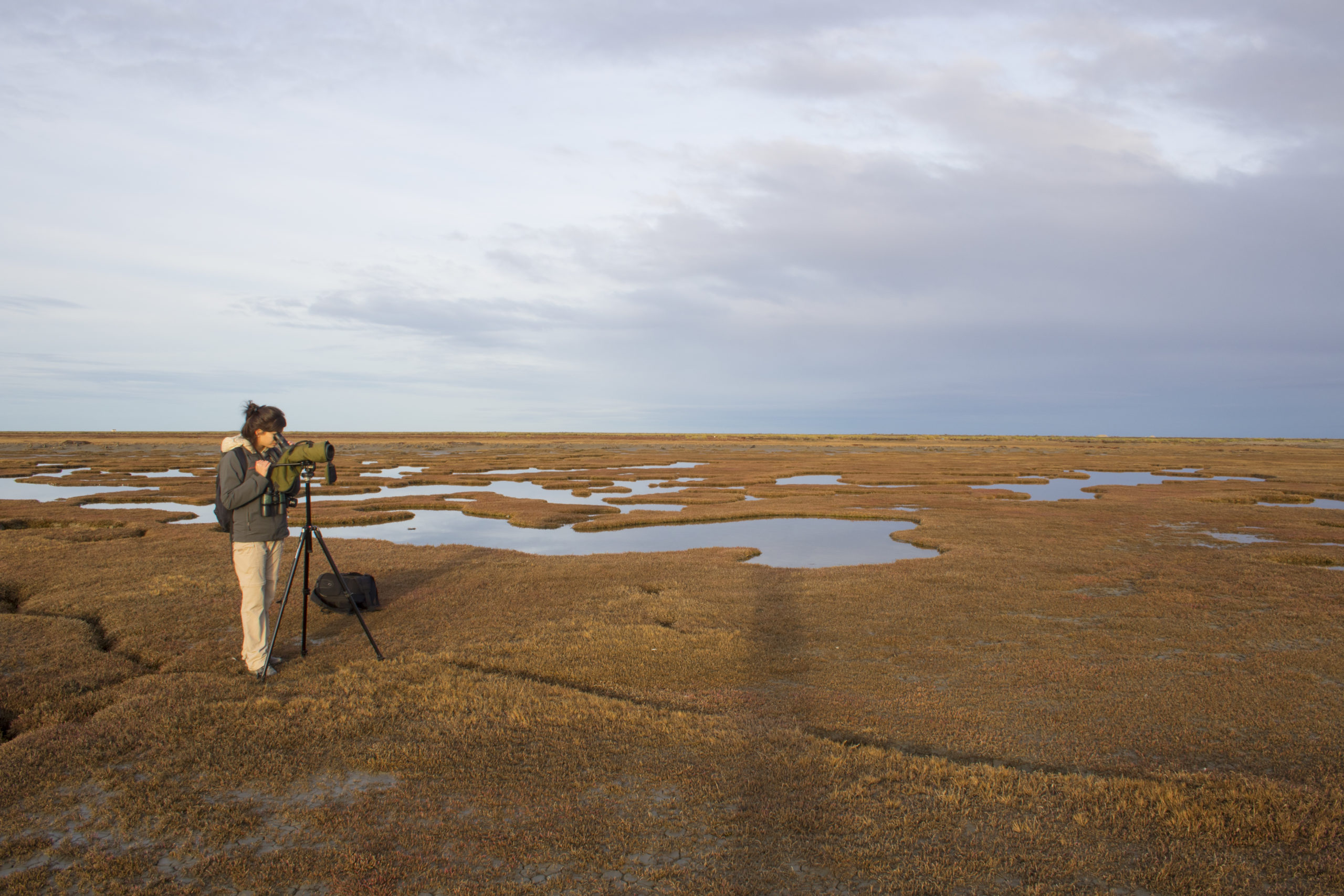
Germán Montero
Executive Director, Asociación Ambiente Sur
2025 marks two decades since the Río Gallegos Estuary was designated as a Site of International Importance within the Western Hemisphere Shorebird Reserve Network (WHSRN). Two decades of collaborative work. It is a moment to look back, honor what we have built, and reflect on the power of a community that chose to defend its natural heritage through dedication, scientific rigor, and collective action.
The Río Gallegos Estuary sits in the far southeast of continental Patagonia, in the Province of Santa Cruz, Argentina. It is an ecosystem of extraordinary ecological value. The site hosts a significant proportion of the global populations of the Magellanic Plover (Pluvianellus socialis) and the Magellanic Oystercatcher (Haematopus leucopodus)—two species endemic to southern Patagonia. It also supports large numbers of three migratory shorebird species from the Northern Hemisphere: the White-rumped Sandpiper (Calidris fuscicollis), the Red Knot (Calidris canutus), and the Hudsonian Godwit (Limosa haemastica). These birds depend on the estuary as a migratory stopover during the nonbreeding season. It is estimated that, together, Nearctic and Patagonian shorebirds bring more than 20,000 individuals to the estuary every year.
For two decades, Manomet and Asociación Ambiente Sur have worked side by side to protect the Río Gallegos Estuary and strengthen conservation across Patagonia. Manomet became a key ally in the early 2000s, supporting the process that led to the estuary’s 2005 designation as a WHSRN Site of International Importance and the development of its management and legal protections. With Manomet’s technical and financial support, Ambiente Sur carried out pivotal initiatives, including the city’s first major awareness effort, the Estuary Pride Campaign, which transformed public understanding and appreciation of the estuary.
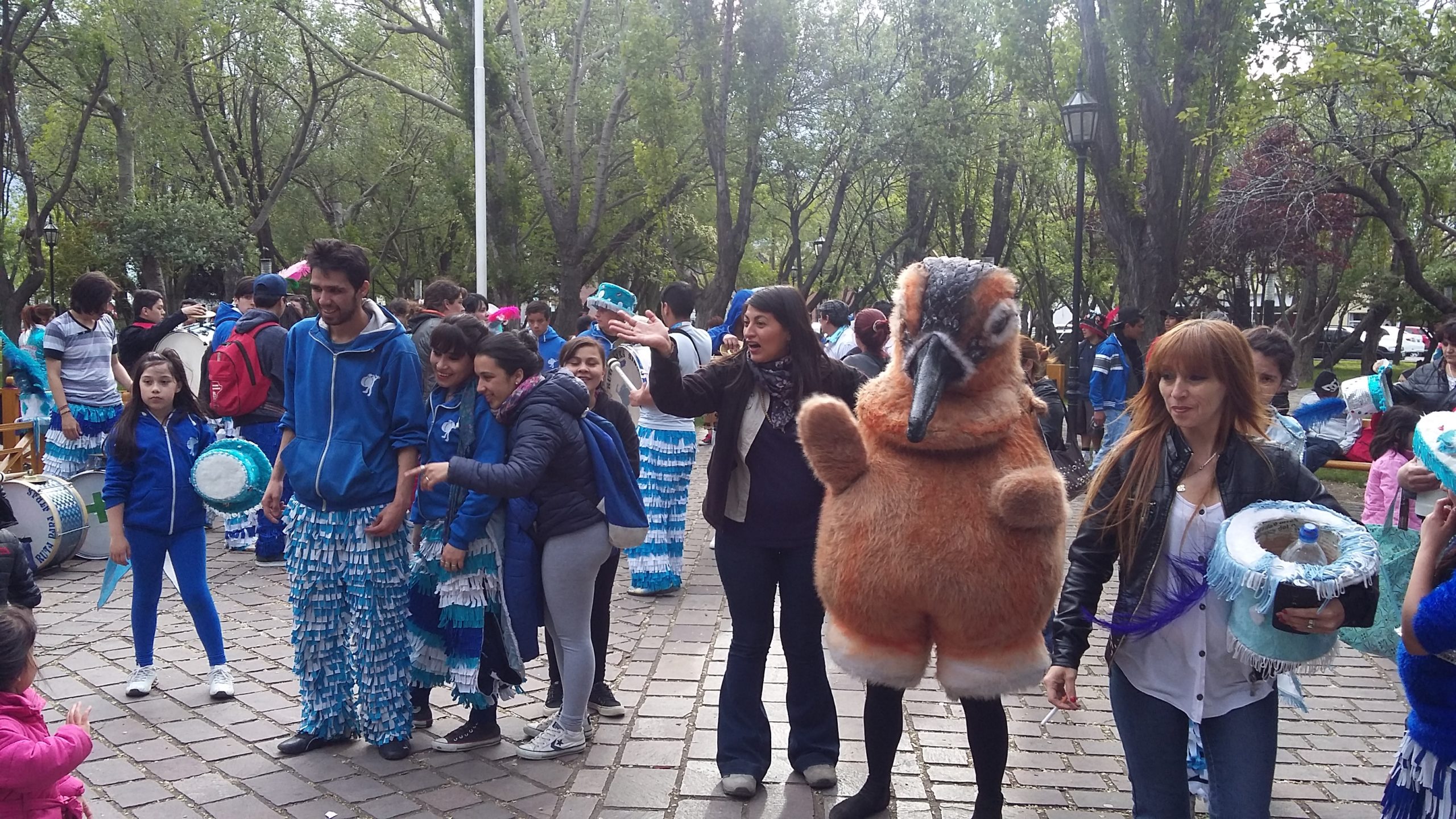
A Local Movement that Grew into an International Effort
Asociación Ambiente Sur was founded on March 7, 2007, born from the shared concerns of citizens who understood the importance of becoming involved in real, tangible conservation actions and environmental education. Our work has grown steadily since then, achieving international reach through partnerships with civil society and governmental institutions at local, regional, and global scales.
But the seeds of this work were planted long before the organization existed. In the late 1990s and early 2000s, different people and institutions began showing interest in the estuary, although its value for shorebirds was still unknown. Scientific studies led by Mag. Silvia Ferrari and Mag. Carlos Albrieu at the Universidad Nacional de la Patagonia Austral (UNPA–UARG) provided the first essential data proving its ecological importance. At the same time, ornithologist Santiago Imberti—who today serves as our Vice President—was conducting monitoring efforts that further illuminated the site’s significance.
From my work in the municipality, I was exploring ways to protect this environment – an environment I came to appreciate thanks to the work of those researchers. For a while, we all worked independently—scientists, citizens, and local government—until finally we found each other, shared our concerns (especially about the threat of marshland infilling), and decided to join forces.
That moment of convergence marked the beginning of a coordinated conservation effort that would shape the future of Río Gallegos. One of the first challenges was recognizing that conservation cannot happen in isolation. The estuary is a shared space, and its protection requires dialogue, cooperation, and joint work between institutions, municipalities, organizations, and residents.
With time, building networks with other sites and related initiatives strengthened local capacity and allowed us to learn from diverse experiences across the region. That shared vision became our compass and our strength.
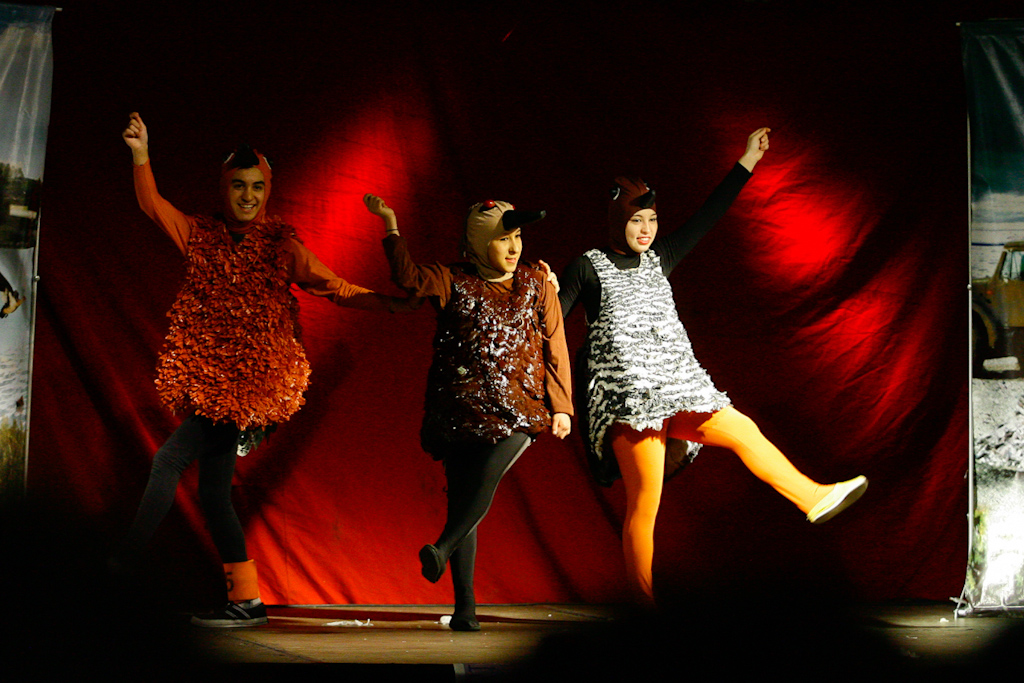
Milestones That Changed the Course of Local Conservation
The cross-border, cross-institutional vision remains at the heart of our work. This collaborative approach led to significant achievements:
2001: Creation of the Provincial Migratory Bird Reserve
2004: Creation of the Urban Coastal Reserve, which definitively stopped marshland infilling—the main threat at the time
2005: Official designation of the site within conservation frameworks: Development of a coastal corridor with interpretive signage and the first funds for the Environmental Interpretation Center, supported by the Municipality and UNPA–UARG. Designation of Rio Gallegos as WHSRN Site of International Importance
2007: The first public hearing for the creation of the Urban Nature Reserve System (SRNU)
2009: Creation of the Urban Nature Reserve System (SRNU), integrating estuary conservation with associated urban wetlands
2011: Completion and opening of the Río Gallegos Estuary Interpretation Center with support from Manomet, the Municipality, and UNPA–UARG
2021: Launch of the Binational Pluvianellus Project, led by the Leñadura Bird Rehabilitation Center (CRAL) in Punta Arenas, Chile, and Asociación Ambiente Sur
2023: Change in the global status of the Magellanic Plover, uplisted from “Near Threatened” to “Vulnerable”
2024: The Magellanic Plover (Pluvianellus socialis) was listed on CMS Appendix I, thanks to a collaboration between the governments of Chile and Argentina, Manomet Conservation Sciences, and local partners Asociación Ambiente Sur and Centro de Rehabilitación de Aves Leñadura.
2025: First Binational Meeting and the development of the agenda for the Magellanic Plover.
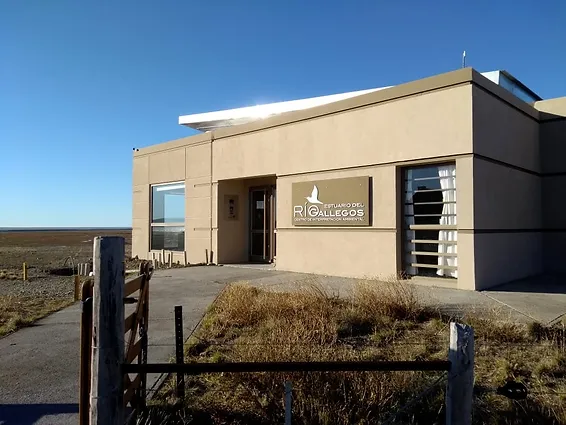
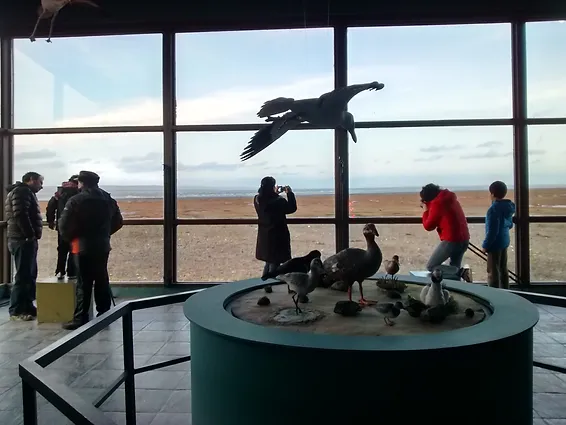
Looking Towards the Future
Many residents arrive in this city looking for a place to build a life, just like the migratory shorebirds that return each year seeking refuge in the same environment. In simple terms, in twenty years, we achieved something profound: we went from turning our backs on the estuary to looking at it, valuing it, embracing it, protecting it, and enjoying it.
There is still much to do, but we have transformed a historical relationship. Today, the estuary is understood, cared for, and increasingly celebrated. We now have stronger governance structures, better scientific understanding, and a growing social and educational appreciation expressed through public activities, citizen engagement, and environmental education.
Manomet and the WHSRN Executive Office have continued to strengthen local and regional conservation through shared projects such as Coalitions for Shorebird Conservation and through their involvement in the Estuary Governance Coordination Space, which unites state and community actors in collaborative management.
Our hope for the future is twofold. First, to consolidate what we have built—strengthening formal coordination spaces like the Estuary Governance Coordination Space and ensuring their long-term institutional and financial sustainability. Second, to welcome even more residents into the estuary: to invite them to know it, enjoy it, and feel connected to its immense value. Because this place belongs to all of us, shorebirds, wildlife, and the people who call Río Gallegos home.




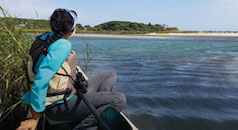
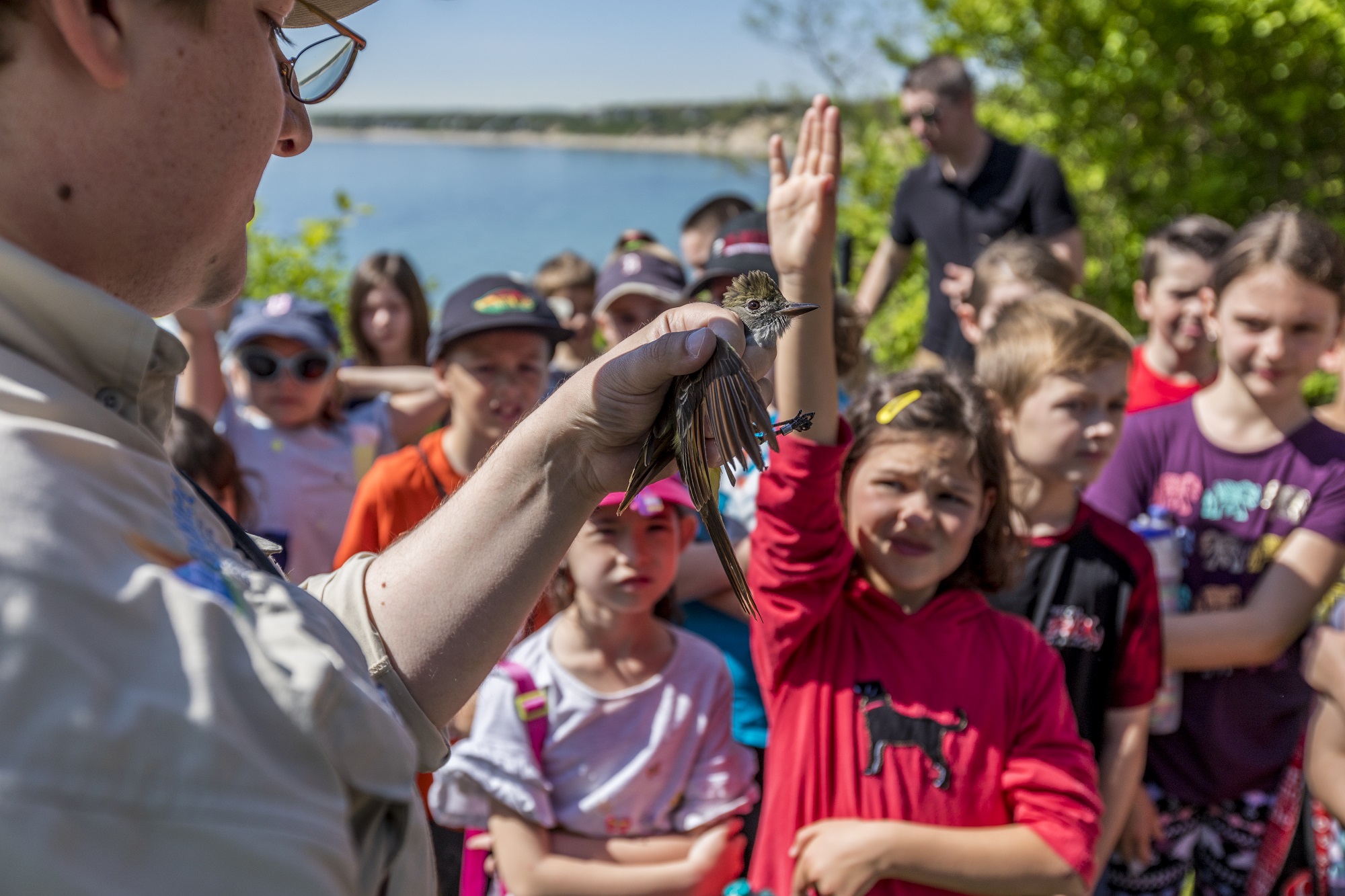
 Back to all
Back to all